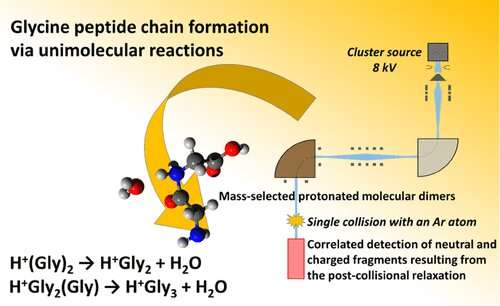This article has been reviewed according to Science X's editorial process and policies. Editors have highlighted the following attributes while ensuring the content's credibility:
fact-checked
peer-reviewed publication
trusted source
proofread
Tracing the origin of life—a new abiotic pathway for the formation of peptide chains from amino acids

A team of scientists from France and Austria has discovered a new abiotic pathway for the formation of peptide chains from amino acids—a key chemical step in the origin of life. The current study provides strong evidence that this crucial step for the emergence of life can indeed occur even in the very inhospitable conditions of space.
The origin of life is one of the great questions of mankind. One of the prerequisites for the emergence of life is the abiotic—not by living beings caused chemical—production and polymerization of amino acids, the building blocks of life.
"Two scenarios are being discussed for the emergence of life on Earth: On the one hand, the first-time creation of such amino acid chains on Earth, and on the other hand, the influx from space," explains Tilmann Märk from the Department of Ion Physics and Applied Physics. of the University of Innsbruck. "For the latter, such amino acid chains would have to be generated in the very unfavorable and inhospitable conditions in space."
A team of researchers led by Michel Farizon from the University of Lyon and Tilmann Märk has now made a significant discovery in the field of abiotic peptide chain formation from amino acids for the smallest occurring amino acid, glycine, a molecule that has been observed several times extraterrestrially in recent years.
A study published in the Journal of Physical Chemistry A, which also made the cover of the journal, shows that small clusters of glycine molecules exhibit polymerization upon energy input. A reaction occurs within a cluster consisting of two glycine molecules. The two amino acids become a dipeptide and a water molecule. The reaction of a dipeptide to a tripeptide within a cluster was also demonstrated by the researchers.
"Our study sheds light on the less likely unimolecular scenario for the formation of such amino acid chains in the extreme conditions of space," says Michel Farizon. "We were able to show that peptide chain growth occurs through unimolecular reactions in excited cluster ions, without the need for contact with an additional partner such as dust or ice."
The recent paper provides evidence that the first step toward the origin of life can occur in the highly unlikely conditions of space. "The study is an important milestone on the route to understanding the origins of life. The results will serve as a basis for further research in this field," Michel Farizon and Tilmann Märk are convinced.
More information: Denis Comte et al, Glycine Peptide Chain Formation in the Gas Phase via Unimolecular Reactions, The Journal of Physical Chemistry A (2023). DOI: 10.1021/acs.jpca.2c08248
Journal information: Journal of Physical Chemistry A
Provided by University of Innsbruck





















